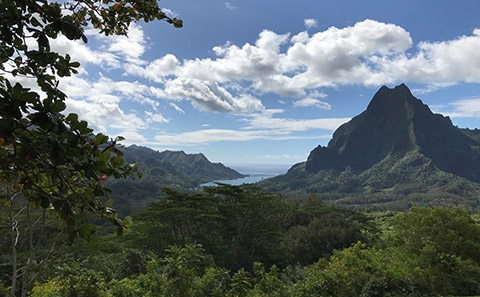Island plant life becomes more similar when humans move in

New research by the University of Southampton shows that human settlement increases the similarity of flora growing across island groups – impacting ecosystems and the wildlife that relies upon them.
Researchers have found that during approximately the last 3,000 years the distinctiveness of the range of plant species on any one island in the many groups of islands in the South Pacific has reduced – a process which scientists call ‘homogenisation’. This coincides with human migration to the region.
Findings from the study are published in the journal Nature Ecology and Evolution.
Dr Nichola Strandberg, who led the research while studying at the University of Southampton, comments: “Our study demonstrates that in small island groups, human occupation is a driving force behind the homogenisation of flora. Human actions seem to contribute to a diminished uniqueness in the variety of plants growing across the region. Although our research is limited to the South Pacific Islands, there are many hundreds of thousands of other small islands around the world to which this may be relevant.”
A team from across Europe, Australia, New Zealand and the USA – led by the University of Southampton with the Universitat Autònoma de Barcelona and University of Bayreuth– examined datasets of fossil pollen records from 15 swamp and lake sites on 13 islands in the South Pacific. They compared the composition of plant life prior to, and after humans moved there.
People moved to the South Pacific in two stages. The main migration event was to western Polynesia, Melanesia and Samoa around 3,500 to 2,800 years ago. Later, around 1,000 to 700 years ago, people spread further east to the remaining islands, such as French Polynesia and Rapa Nui (Easter Island), north to Hawaii and south to Aotearoa (New Zealand). None of the islands had previously been inhabited.

The researchers conclude that humans modify flora soon after they settle within an area. They introduce new, non-native plants and animals which they have brought with them and undertake activities to help them survive, such as agriculture, the building of settlements and the use of fire to clear land. This all contributes to some plant species disappearing from an area, others being driven to extinction and less distinctiveness across all the islands in those species which remain.
Interestingly, the study also showed that areas of land at a higher elevation retained more distinctive flora, probably because they were less likely to have been inhabited and impacted by humans.
Professor David Sear of the University of Southampton co-supervised the research with Professor Mary Edwards, Professor Peter Langdon, and Dr Sandra Nogué, and he heads up a wider project to better understand the impact of climate and other natural disturbance events on the migration and settlement of the Pacific islands.
Professor Sear comments: “The implications of this research are that human arrival rapidly impacted the floral communities on tropical islands that previously showed great variety in their native flora, owing to their dispersed and isolated locations. The Polynesian and Lapita peoples in effect manipulated their islands to support their populations – in so doing they homogenised a previously biodiverse archipelago of tropical islands.”
“Our findings will help Pacific islanders better understand how their ancestors adapted to climate and natural hazards, but also gain a richer knowledge of the ways in which they altered the islands they inhabit.”
The research was supported by UKRI grants and a SPITFIRE Doctoral Training Centre Studentship fund.